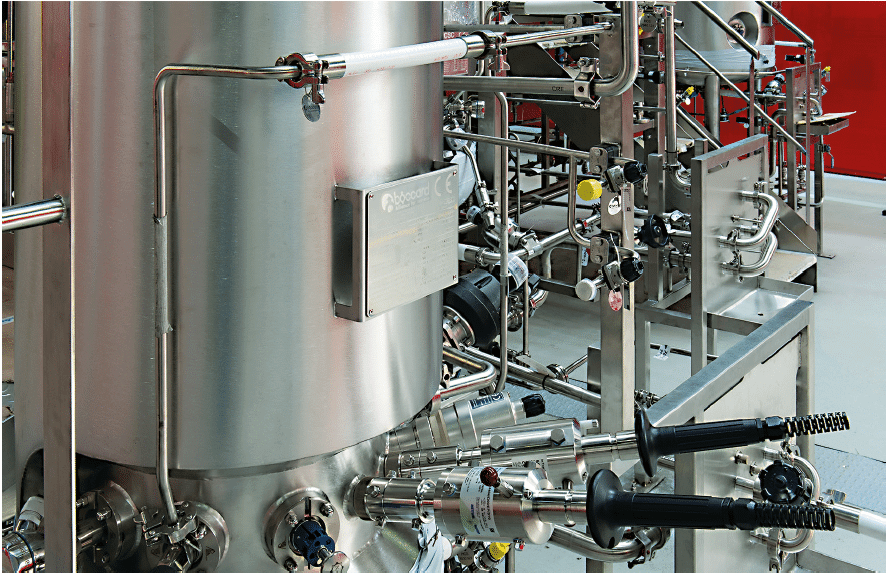Sommaire
- Frontière Part I/ Part II des BPF : Modalités d’application aux produits biologiques
- Moving One Unit Operation At a Time Toward Continuous Biomanufacturing
- « Close Collaboration Maximizes Value of Engineered Solutions and Saves Time in Start-Up »
- Improving Single Use Bioreactor Design and Process Development. New Research Towards Intensifying Seed- Train & Scale-up Methods Using 5:1 Turn- Down
- Qualification approach for the validation of real-word shipping in single-use systems
- Expansion of Human Bone Marrow-Derived Mesenchymal Stem Cells in BioBLU 0.3c Single-Use Bioreactors
- Single Use & Stainless Steel: complementarity or fight?
- Low Endotoxin Recovery (LER) is today one of authorities serious concerns regarding pyrogen testing
There has been a huge increase in single use apparatus in the biopharmaceutical manufacturing world during the last. Many companies compete in manufacturing production tools. At Boccard where our mantra is “In Stainless Steel We Trust”, we have a different opinion. We believe that plastic and stainless steel are complementary. Let’s take the example of cell culture.

Before growing in a huge fermenter (e.g. 1000 L), what is the point of using a stainless steel 20 L fermenter as a first step from an economical point of view? why not use Single Use apparatus in this case?
As an industrial integrator who has been dealing with Stainless Steel for almost 100 years worldwide, we have been regularly asked on Single Use and Stainless Steel. We notice that when talking about this topic, you easily face pros and cons. Whoever you listen to, the arguments seem legitimate.
Single Use Technology started being available about twenty years ago. Viewed with caution at its start, it rapidly became attractive for many reasons. Firstly Capital Expenditure CAPEX is definitely reduced. Secondly, the availability of the units is higher as no time is needed for cleaning and sterilizing. This eliminates also the use of chemicals and water and diminishes the use of energy as well as environmental footprint.
Cross-contamination is a major concern in biotech. Single Use – as its name suggests– reduces this kind of risk. Qualification and validation procedures of the processes are much easier.
Single Use bioprocessing enables time saving as it can be qualified in advance.
Maintenance is made easier and much cheaper. Last but not least, the plant flexibility is increased and the lead time necessary to get the devices is relatively short. These are additional benefits as time to market is predominant. It is obvious that costs can escalate if the product is not available on time.
Single Use Technology could be seen as showing definitely many advantages compared to the Stainless Steel bioreactors. However, everything is not all black and white.
Arguments in favor of conventional Stainless Steel are numerous too.
We are lucky to be in contact with major players worldwide. Despite the numerous improvements which have occurred in Single-Use Technology, the traditional brick and mortar continues to show a lot of advantages.
First of all, it is clear for everyone that it is well established and fully under control. Secondly, despite Single Use Technology, there is no capacity limitation. We design and build tailor-made skids as a response to our clients’ specific needs. This is especially interesting when they are manufacturing on a large scale. Maximum size for a single use fermenter bag is 2,000 L.
Do you know many companies willing to take the risk of handling this size or even bigger bags from a practical point of view?
A wide range of capacity is not the only advantage. If we consider lifecycle costs on the whole, it is cheaper to use Stainless Steel solutions.
The use of plastic is zero as no plastic bag is required to proceed. In other words and on a long term basis, impact on the environment is smaller. Keep in mind that all the plastics must be incinirated after use.
We previously talked about cross-contamination concern. It is clear that there is no acceptable consensus about the Single-Use extractable and leachable levels. With Stainless Steel, it is simply easier. Of course there is no such thing as zero risk. But once your unit is cleaned and sterilized, risks are undeniably very limited. Moreover operators have less manual activities as they do not have to prepare any manifolds. So the risk of misuse is limited.
There are many more examples which show that Stainless Steel still has its place. Customising the process environment is one of them. A last one is that equipment available on the plant is not limited to one technology only. Indeed, other technologies can be implemented around the existing processes.
We could also develop the arguments against each solution with regard to CAPEX, Operating Expenditure (OPEX), safety, environmental footprint, ergonomics, etc. Whether you are an investor, a producer, an operator, a quality manager, a supplier, or anyone else, the conclusion remains the same: there is room for both technologies.
Whichever company (emerging or very well established), their target remains the same: limited investments and quick productions. For now, it is wise to turn to the Single Use Technology when small tank volumes are required and by mixing the different techs. For a downstream process, buffer preparation will be made with SU bags linked to filtration and/or chromatography skids. Upstream, 20 L SU fermenter is going to a 200 L and to a 1,000L fermenter (both made in Stainless Steel). During the last couple of years we have also observed new SU skids entering this market like filtration or continuous chromatography. These are big changes for our industry, where the most agile only will be able to survive.
And what about the 3D printing: when will the first skid be available?
We believe that in the end, complementarity will be the key for a majority of projects. The agile Industrial Integrators able to integrate all techs, match production scales and address economic issues are likely to remain. At Boccard, we strive to be one of them and still… In Stainless Steel We Trust!

Frédéric CHEVIRON – BOCCARD HEALTH & CARE
fcheviron@boccard.fr

Sophie PERRILLAT-CHARLAZ – BOCCARD HEALTH & CARE
fcheviron@boccard.fr
Partager l’article
Glossaire
SU: Single Use
CIP / SIP: Clean In Place / Sterilization In Place
CAPEX: Capital Expenditure
OPEX: Operational Expenditure
Bibliographie
• The Medecine Maker x GE Healthcare: The Great Debate Stainless Steel Versus Single Use, September 2016
• BioProcess International: The Single-Use or Stainless Steel Decision Process: A CDMO Perspective, December 2015





